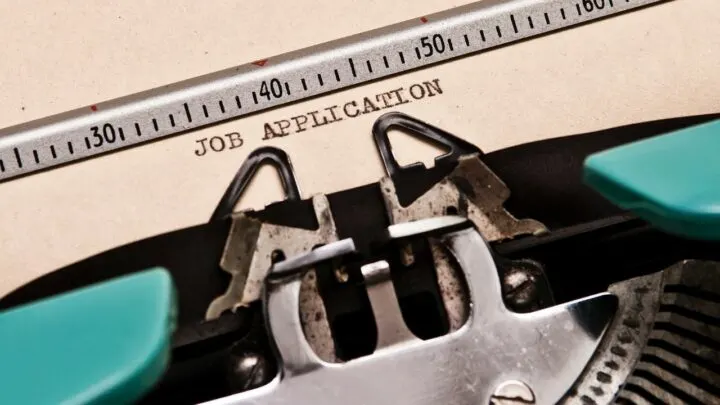

Seeking a career opportunity can be a physically, mentally, and emotionally draining activity, for it entails constant, active participation from the applicant.
Spilling more fuel to the fire, job application statuses can sometimes be linguistically murky that they become a source of apprehension among desperately hopeful candidates.
To make sense of this concern, our article today caters to the various meanings behind job application statuses used by employers in the recruitment process.
These statuses are what we can either read in job advertisement platforms or jargon heard from recruitment agents when giving updates to applicants.
“In process/progress, applied, or under review” are neutral job status indicators. “Incomplete application, position withdrawn/closed/filled, or for future consideration” are negative ones. Whereas, “process completed, shortlisted, and hired” contain positive connotations.

Inasmuch as we want to land on a job as quickly as possible, our minds may tend to create various interpretations of word meanings based on our emotional states.
Put simply, we may likely read too much between the lines when we are in a state of anxiety and scarcity, which may or may not be a good thing.
For once, apprehension toward a job application can be beneficial because it keeps our blood pumping for future results and events.
But, it can also become an unhealthy feeling when we start to misinterpret ordinary words and phrases that do not necessarily imply anything bad at all.
So, let’s have a look at the different job application statuses that we may encounter during a job application procedure.
In the next section, you will find expressions that mean the job application is still ongoing or continuing at the time of reading or hearing the status.
Since these words and phrases are used when an application process is still underway, there’s no need to panic upon receiving these indicators.
A job application is described as “in process” or “in progress” when an applicant has completed the preliminary steps as instructed by a recruiter or described on a job advertisement platform.
For more detailed information on replying to job ads on online platforms, you may check our other article covering the topic here: How to reply to a Craigslist Job Posting .
Application “in progress” does not mean anything negative nor positive just yet. It simply is a remark that informs an applicant that the prospective employer is still reviewing the application.
This status can be achieved after the candidate has followed all the necessary procedures stated in the job posting, such as successfully submitting a resume and cover letter to the personnel in charge.
To be able to know how to send a resume via e-mail , job applicants may need to understand the process of sending this document as an e-mail file attachment.
But, as some companies follow certain stages in their recruitment process which could be automatically tracked online, application documents may also be submitted directly through advertising websites.
So, if and when you see that your application is still “in process” or “in progress,” all you have to do is to patiently wait for the next update from the employer.
The job application status that says “under review” means that the information and documents coming from the applicant are still being screened by the employer.
This may also suggest that the application is being examined all together with the other applications that the employer has received.
Depending on the urgency of the job position to be filled in, an application may stay in this status within one to four weeks upon the submission of necessary documents.
Moreover, the “under review” status may also mean that the candidate has already submitted his or her cover letter and resume, and an initial exam has already taken place.
Just like organizing resumes, writing a cover letter has its purpose in correspondence, as well as its own can of worms.
The purpose of a cover letter is simply to introduce yourself by summarizing relevant skill sets and professional experiences to a prospective organization.
If you’re interested in knowing the nooks and crannies of cover letters, please feel free to have a look at our other resource text that covers this issue at length here: Cover Letter Dos and Don’ts .
When an advertising platform indicates that one has “applied” for a posted job, it means that the applicant has already taken the preliminary application processes.
But, it does not essentially mean that the employer has already reviewed the application, nor has it already decided whether one can proceed to the succeeding steps.
If you have not applied for the job, yet the status indicates so, then you may want to try to find out who else could have had access to your personal information and credentials.
Or, it could also just be a system glitch that may disappear after some time. It could also be a mistake on the employer’s end, wherein an inexperienced staff, for instance, may have erroneously updated the tracking system.
But, in its entirety, this does job application status would not cause any harm to the applicant, at least not unless the job role being applied for is an illicit one.

Another application status that we may encounter is something that says “application received.”
When an application is received, it means that an advertising platform or an employer has gained access to a person’s application materials.
This status does not necessarily mean that a human, such as a recruitment agent, has already reviewed the application.
Some job advertisement platforms can automatically report the receipt of job applications once they get through the employers’ recruitment system.
So, you might have to wait a little longer until a representative from the company may inform you of whether you can proceed to the next phase.
When an application status says “interviewing,” this means that the employer is actively screening job seekers that have passed the initial recruitment procedures .
As this is the case, the status suggests that the job role has not been filled in yet, but the chances of hireability may decrease when you see a higher number of applicants being interviewed.
Nevertheless, the job position is still worth trying especially if you think it is your niche. So, you can’t just skip this particular job simply because the employer is talking to a pool of talents.
If your credentials, experience, and interest are not that compatible with a particular job containing this status, then it is better to keep seeking a more appropriate one.
Although you don’t have to be alarmed by the “interviewing” status, confusion may likely arise if a job posting gets removed before an interview , which leans more toward being a negative indicator.
If your application has been marked as, “received submission” or “submission received,” it means that all your materials have been successfully received.
Generally, the status “received submission” means that the application you submitted is not yet under review. However, your application documents have been delivered and are accessible to your potential employers.
Unlike the status “under consideration,” “under review,” or “in progress,” an application that has only been “received” is not yet being looked at.
The application status “received submission” does not require you to do anything but wait. The ball is squarely in your potential future employer’s court.
The good news is that once your application has been marked as “under consideration” after the interview stage, you’ve already done most of the heavy lifting.
From figuring out how to respond to an interview request on LinkedIn to working out what place of residence means on a job application , putting yourself forward for a job takes a lot of time and effort.
Immediately after your interview, you may want to get in touch with your interviewer by email to thank them for their time. Once you have done this, don’t reach out again until your application status has been updated.
If your application has been labelled “under consideration,” and you are wondering whether or not that is a good sign, the answer is that it is neutral.
There is no real information to be gleaned from this status, except that you are still being considered for the position, but no decision has been made.

Since we’ve already discussed the statuses that may not substantially mean anything just yet, knowing some verbiage with negative connotations would also be practical.
This next section lists down the status updates that should prompt an applicant to search for another job opportunity.
“Incomplete application” suggests that some pieces of information or documents are missing in the sense that the target employer has not successfully obtained such materials.
This status may also mean that a job seeker has not fully committed to the application procedures because he or she may have deliberately stopped mid-process.
In the sense of academic admissions, “incomplete application” may also mean that a student applicant has failed to submit all the required information, credentials, or transaction fees.
As large-scale employers and institutions often get inundated with bulk applications, chances of getting hired or admitted do decrease when one incompletely processes his or her application.
However, smaller organizations may have the time to reach out and follow up on incomplete applications; therefore, you might still receive a call or e-mail even if you haven’t completed your application.
A “withdrawn position” suggests that the employer has stopped accepting applications for a particular job role.
Oftentimes, the reason is not disclosed to the public; however, it can be released to a pre-existing applicant for proper guidance.
A position may be withdrawn when an employer may have to edit the job description or when there is either a surplus or shortage of candidates.
If you have an existing application for a job post that says “position withdrawn,” it is better to try your luck with another prospective employer and move on instead.
This can be a wiser decision to make especially when you haven’t heard from anyone from the company or the advertising platform between one to four weeks after you’ve applied for the role.
Typically, job postings are available for up to thirty days on most job advertising platforms.
A job position may be taken down or “closed” when an employer is no longer accepting nor willing to accept further applications from job seekers.
More particularly with entry-level positions, which often entail a higher volume of applications than decision-maker roles, the position can get closed sooner than later.
Of course, we cannot discount the possibility that the employer has already found a suitable person for the vacant role when this is the job status.
You can either wait for the position to be opened once again or, better yet, move forward to your next prospective employer.
Unless you’re applying for a mid-to-high level management position that has an extremely attractive offer, it would be wiser to do choose the latter.
A clearer and more straightforward phrase than the previous one, “position filled” indicates that you can no longer apply for a job because someone else has already been hired for the role.
Although this status could be disappointing for a hopeful job seeker, it is also beneficial in the sense that it is a straightforward remark.
With this, an applicant is not left hanging by a thread as he or she gets immediately informed of the job’s availability or status.
Thus, knowing right away that a position has been filled in saves a candidate’s waiting time and application effort.
Unfortunately, if your job application status changes from “under consideration” to “not retained,” it means you have not been selected for the position you applied to.
The person responsible for hiring has decided to go in a different direction.
At this stage, you may want to accept the outcome and refrain from further contact with the company or organization you applied to. Alternatively, you can get in touch to ask why you didn’t get the job and request constructive criticism of your application.
If you do this, make sure you know how to respond to feedback appropriately and that you won’t take any less-than-positive reviews personally.
If a job status says “for future consideration ,” it means that an existing application is not successful at the moment.
This phrase suggests the idea that your application has been “shelved” or set aside by the employer for some reason.
It could be that although you have demonstrated suitability for the job role, someone else has met more of the requirements, skill set, and experience being sought.
If the job is attractive enough, keep your lines open as you could be the next person to be contacted in case the originally selected person or the employer changes their mind.

Lastly, we’ll also go over some job application statuses that could reduce an applicant’s apprehension and even give them a silver lining.
If there are statuses with neutral and negative connotations, apparently, there are also ones that could truly make us smile and keep going.
When a job application status says “shortlisted for x” (e.g., for a final interview, technical interview, or skill examination), then a candidate has certainly passed a recruitment phase.
Of course, we can’t simply be too confident and complacent after being endorsed for an interview because it does not suggest a successful hire yet.
But, in the context of online applications, which actually entail a multitude of competitors, this can already be a good sign.
So, you had better brace yourself by religiously practicing how to respond to interview questions, particularly behavioral ones, that a hiring officer or manager may ask.
Behavioral questions are especially tricky in the sense that the evaluation process is subjective rather than objective.
Communicative skills, facial expressions, voice tone, and portrayal of confidence are the key elements in which job seekers can practice improving prior to any interview.
In job applications, when the status says that a “process is completed”, it means that an applicant has successfully carried out a task entailed by the application.
This phrase may either appear after every successful stage, as well as at the end of the whole application procedure.
However, it does not automatically mean that the applicant is already hired by the employer because it is only the “process” that has been “completed.”
When this message prompt appears in an online job application platform, the applicant is often advised to proceed with the next step of the application.
Or, he or she may be instructed to wait for further instructions by the personnel in charge via call or e-mail.
To increase your chances of getting hired, always keep your lines open so that future transactions will flow smoothly.
Finally, the most widely anticipated status that can uplift a job seeker’s mood is the one that says “hired.”
When a candidate gets “hired,” it means that the most crucial and taxing parts of the recruitment procedures have already been carried out successfully.
These parts include the encoding of personal information, skill examinations, behavioral evaluations, background checking, and interviews.
This status also suggests that the application requirements such as the submission of credentials have already been reviewed and accepted by the employer.

The status “application under review” is neither good nor bad.
This is generally the status that follows “received.” It means that your application is currently being looked at but that no decision has been made on it yet.
“Application under review” is good in the sense that it means your potential future employer has not made a hiring decision yet. This means they have not hired someone else, so your application is still active.
The best thing to do if your application is under review, is wait. There’s no point getting in touch to inquire about the progress of your application; in fact, doing so might come across as entitled or pushy, so tell yourself to be patient.
Large corporations are increasingly using talent management and recruitment software to manage their hiring processes.
This helps them standardize and streamline candidate appraisal. This shift toward standardization also has benefits for anyone applying via these portals.
The biggest advantage of applying to a company that uses external recruitment software, is that it is easy to figure out what your application status means.
One of the biggest recruitment management sites out there is Workday. To understand what the status you see on your Workday applicant dashboard means, it is helpful to understand how things look for the person doing the hiring.
Recruiters who use Workday see the following hiring statuses beside each candidate’s name. The Workday application statuses are:
Read the following explanation of Workday’s candidate application status to learn which of the hiring statuses corresponds with what, and what each Workday application status means.
The application status “under review” refers to the first stages of the application process.
This is when a hiring department is briefly looking through application materials to assess whether all the necessary information is present.
When your status says, “under review,” the hiring manager’s status beside your name will read “review.”
Once it has been confirmed that you all your materials have been successfully received and that all your information appears to be correct, you will be moved on to the “screen” step on a hiring manager’s dashboard, but your status will remain as “review.”
The screening part of the application process is essentially a triage phase. This is where an employer will scan your application to check your qualifications to see whether you are even eligible for the position in question.
For example, if you are applying for a position that requires expertise in software development and have no relevant experience, you will likely be weeded out at the screening stage.
If the hiring manager determines that you do in fact have an appropriate candidate profile, they will change your application status to “assessment.” This will show up on your screen as “in progress” or “in process.”
The meaning of the job application status “in progress” varies from business to business. It can mean everything from reading your cover letter to weighing you up against other applicants.
What you can know for certain is that a Workday application that has been marked “in progress” is in its assessment phase. This is the step of the hiring process that precedes the interview phase.
If a potential employer is impressed by your application and your experience, they will invite you to interview for the position. At this point, you will be sent an offer to attend an interview, and you will be able to select a convenient time slot via Workday’s online scheduling platform.
For whatever reason, some employers prefer to use the application status “in process” instead of “in progress.” However, for all intents and purposes, it means the same thing.
To understand what is going on with a job application marked “in process,” read the previous section.
As soon as you have received an offer to interview for a position, your status on your Workday applicant portal will change to “interview.” The same thing will happen on the hiring manager’s dashboard.
Your status will stay the same until you have had your interview. After you have completed the interview or multiple rounds of interviews, the hiring manager will make a decision about whether they would like to offer you the job.
If they do, they will conduct a reference check. This means they will contact your previous employers to see whether they would recommend working with you. At this point, your status will change to “under consideration.”
If your status after an interview is “under consideration,” it means your employer is still considering whether to hire you.
It is difficult to know exactly what going on based purely on this label, however. Your potential employer may already have decided that they would like to hire you, provided your references check out.
Or they might still be weighing up your qualifications against those of other candidates whom they interviewed.
The best thing about the Workday application status “under consideration” is that you are almost at the end of the road. Sooner rather than later, your potential future employer will have to provide you with a decision on your application.
This will either come in the form of a job offer or a rejection. If the HR department in question wants to hire you, you’ll receive written correspondence informing you of the offer, and the application status on your portal will change to “offer.”
If the hiring manager has decided to go in a different direction, you will also be contacted with the bad news, and your status will change to “process completed.”
This will show up for the hiring manager as “rejected.”
If you accept an offer of employment, your portal will reflect this by changing to “employment agreement” on your new employer’s dashboard.
Your new employer will conduct a background check at this point.
Your status may change to “employment agreement” too, or else it will go directly to “process completed.”
Once a job application status has changed to “process completed,” you can stop paying attention to this part of the portal. Instead, give your attention to the correspondence you’ll be receiving about your new position!
Once a hiring process is complete and a new employee is being onboarded, the status of the application cycle will be marked “process completed.”
There are obviously different ways that a hiring process can reach this conclusion. The statuses that reflect the different avenues to completion won’t necessarily be available for applicants to see.
If you are not hired, or if you decided to decline the offer, your status on the hiring manager’s dashboard will change. It will be updated to either “rejected” or “declined by candidate,” depending on who has turned who down.
In the context of human resource management, “job status” serves as an indicator that informs job applicants of the condition of a job posting.
In the realm of recruitment and selection, “under review” suggests that an application is being scrutinized by the employer on a surface level. Whereas, “under consideration” means that the employer has already shortlisted the strongest candidates that are suitable for a job position.
Depending on the urgency of the job position being sought by an employer, job applications could remain “under review” between one and four weeks upon successful application.
Knowing the meaning behind job application statuses is crucial for all job seekers in general because it helps them steer clear of misinterpretations.
This also means that we can get rid of our restlessness because we would be properly guided with the best decisions to make and actions to take in the process.
Whether you’re someone actively seeking a job or someone who simply wants to get the hang of recruitment-related whatnots, Linguaholic offers content that explicitly covers such learning areas.
Hope to see you again on our next post!
Hey fellow Linguaholics! It’s me, Marcel. I am the proud owner of linguaholic.com. Languages have always been my passion and I have studied Linguistics, Computational Linguistics and Sinology at the University of Zurich. It is my utmost pleasure to share with all of you guys what I know about languages and linguistics in general.